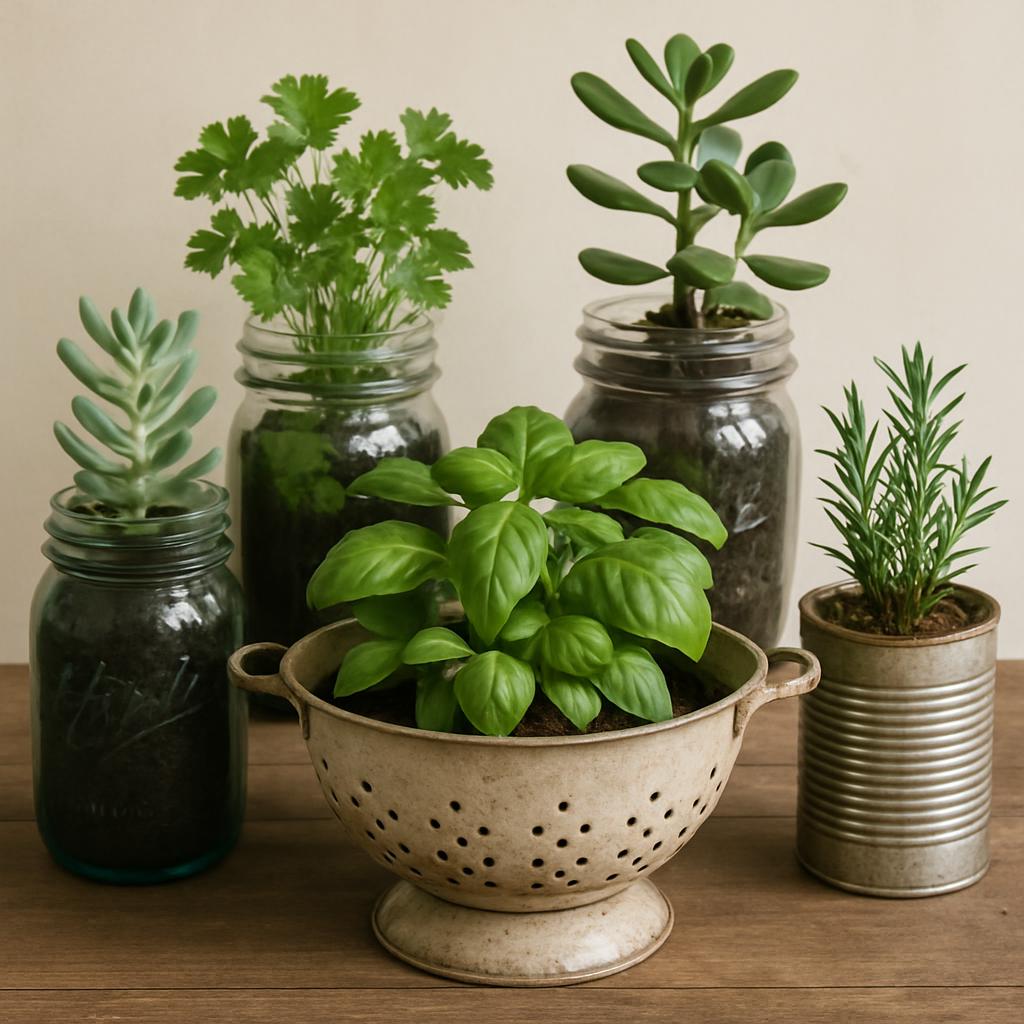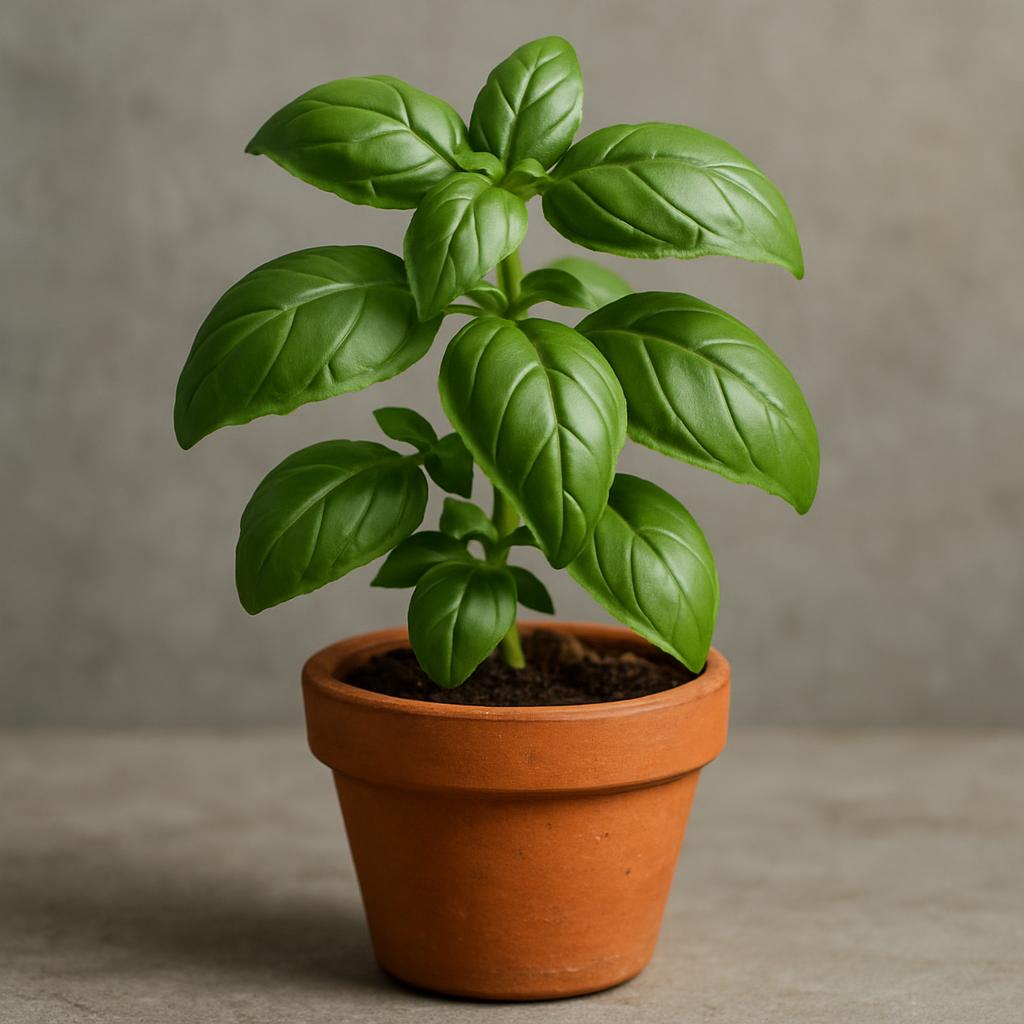Your cart is currently empty!
Maya had exactly four things when she moved into her tiny city apartment: a suitcase full of clothes, a coffee maker, a stubborn basil plant, and a dream of growing her own food. But her new home, a 380-square-foot studio with a single east-facing window didn’t scream garden oasis. Still, Maya believed in possibilities, nature, and in the magic of doing more with less.
This is the story of how she turned her cramped apartment into a thriving, sustainable mini-garden using simple sustainable gardening hacks anyone can use.
“Small spaces don’t limit growth — they teach us how powerful even the tiniest roots can be.”
On her first morning in the apartment, Maya looked at the recycling bin with jars, cans, and containers from unpacking. Inspiration struck.
“What if these are my planters?” she whispered to nobody but the basil.
She grabbed a mason jar, poked drainage holes into a few tin cans, and even reused an old colander she found at a thrift shop down the street. By lunchtime, her windowsill had become a quirky lineup of repurposed planters. It wasn’t perfect, but it was sustainable, resourceful, and undeniably hers.
This became her first lesson in sustainable gardening for small spaces:
Your best planters are already in your home, you just haven’t looked at them that way yet.


The Compost That Started in a Shoebox
Maya wanted nutrient-rich soil, but bags of compost weren’t cheap, and her apartment didn’t have room for the typical outdoor bin.
Then she discovered Bokashi composting — a method small enough to fit under her kitchen sink. She tucked a compact bin (really no bigger than a shoebox) next to the cleaning supplies. Every banana peel, coffee ground, and wilted lettuce leaf went in.
Weeks later, she opened the bin and found what she jokingly called “urban gold.” She mixed her fresh compost into potting soil and waited a few weeks for it to finish breaking down before planting. She realized that something good could come from food scraps she used to throw away.
Another sustainable win:
Sustainable gardening hacks don’t need a yard. Just a corner, a container, and a little patience.
Her Garden Grew Upward, Not Outward
Floor space was limited & half of it was taken by her futon, so Maya started thinking vertically.
She installed a simple hanging bar near the window and added fabric pockets, each filled with herbs. A ladder shelf she found on Facebook Marketplace became home to a confident little cherry tomato plant trying to touch the sun.
Her wall became a living tapestry, a vertical garden that breathed life into the room.
This became her favorite trick for small space gardening:
When you can’t grow outward, grow upward.
The Water-Saving Miracle
One brutally hot week, Maya noticed the soil drying out faster than she could water it. Instead of buying expensive watering gadgets, she tried a hack she learned online: she filled old glass bottles with water, flipped them upside down, and stuck them into the soil.
The slow drip kept her plants hydrated for days.
She added mulch made of shredded paper and dried leaves to keep moisture in. Her water bill dropped, and her plants perked up like they’d been treated to a spa day.
Lesson learned:
Sustainable gardening for small spaces is all about efficiency, saving what you can and using only what you need.
The Plants That Chose Her Back
Maya tried growing everything at first. Some plants thrived. Others didn’t.
Eventually, she found her rhythm:
- Soft herbs like basil and parsley
- Leafy greens like arugula and kale
- Dwarf peppers
- Strawberries
- Micro-greens for instant gratification
These compact, container-friendly plants didn’t just survive, they thrived.
She paired basil with tomatoes (companions that adore each other) and marigolds with peppers to keep pests away naturally. Companion planting became her secret weapon in creating a mini-ecosystem in a limited space.
The Light Trick That Changed Everything
Maya’s apartment didn’t get enough direct sunlight, but she refused to rely on energy-heavy setups. Instead, she used mirrors, one on the wall, one behind her shelf, and a small one she found at a yard sale.
They bounced sunlight around the room, turning dim corners into glowing pockets of warmth. Suddenly, plants that had struggled began stretching happily toward the light.
This hack was so simple, yet so effective:
Use reflective surfaces to multiply sunlight without using electricity.
The Moment It All Came Together
One morning, months after her first mason jar experiment, Maya woke up to something beautiful.
Her apartment, once empty and echoing, was now alive.
Her herbs brushed against each other like an indoor forest. The tomato plant had tiny yellow blossoms. The mint smelled like summer. Sunlight bounced around the room in soft waves.
She sat on her tiny balcony-turned-garden nook, sipped coffee, and realized:
She had done it.
She had created a sustainable mini-ecosystem in under 400 square feet.
Not through expensive tools or fancy setups, but through small, thoughtful choices.
This is what sustainable gardening hacks are really about:
Growing smarter.
Growing kinder.
Growing anywhere.
If Maya could transform a tiny apartment into a thriving garden, so can you. Sustainable gardening for small spaces isn’t about perfection, it’s about creativity, resourcefulness, and making the most of what you already have.


Leave a Reply